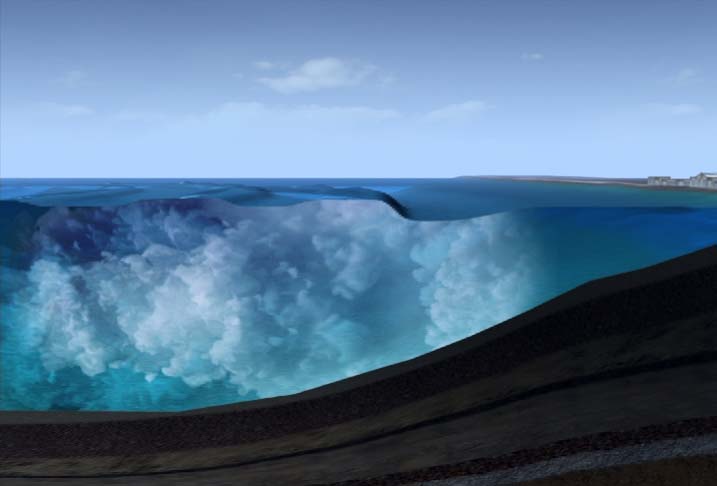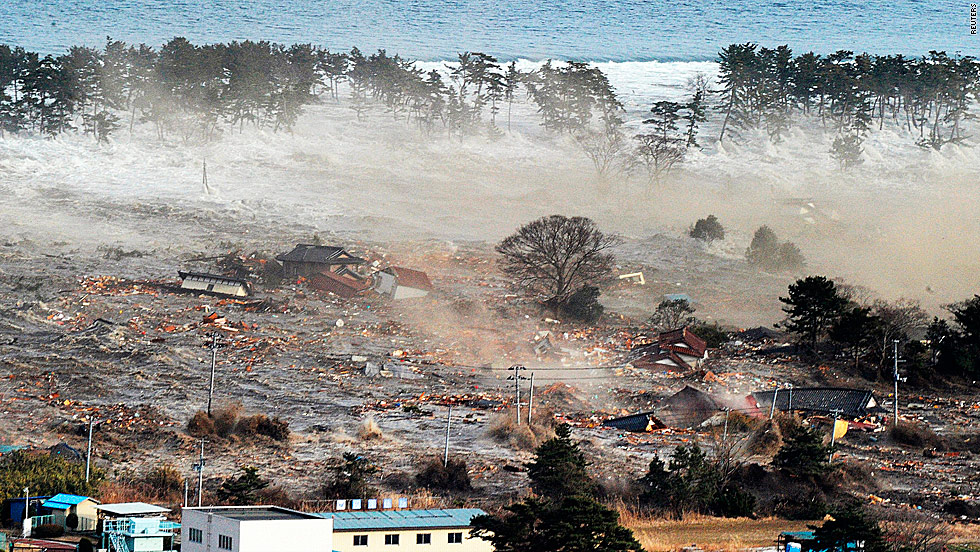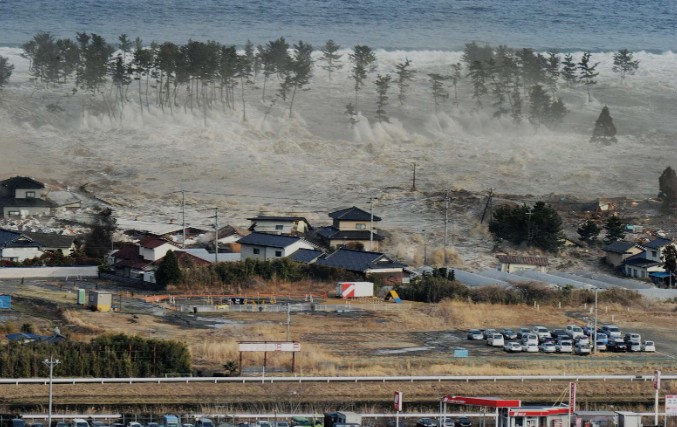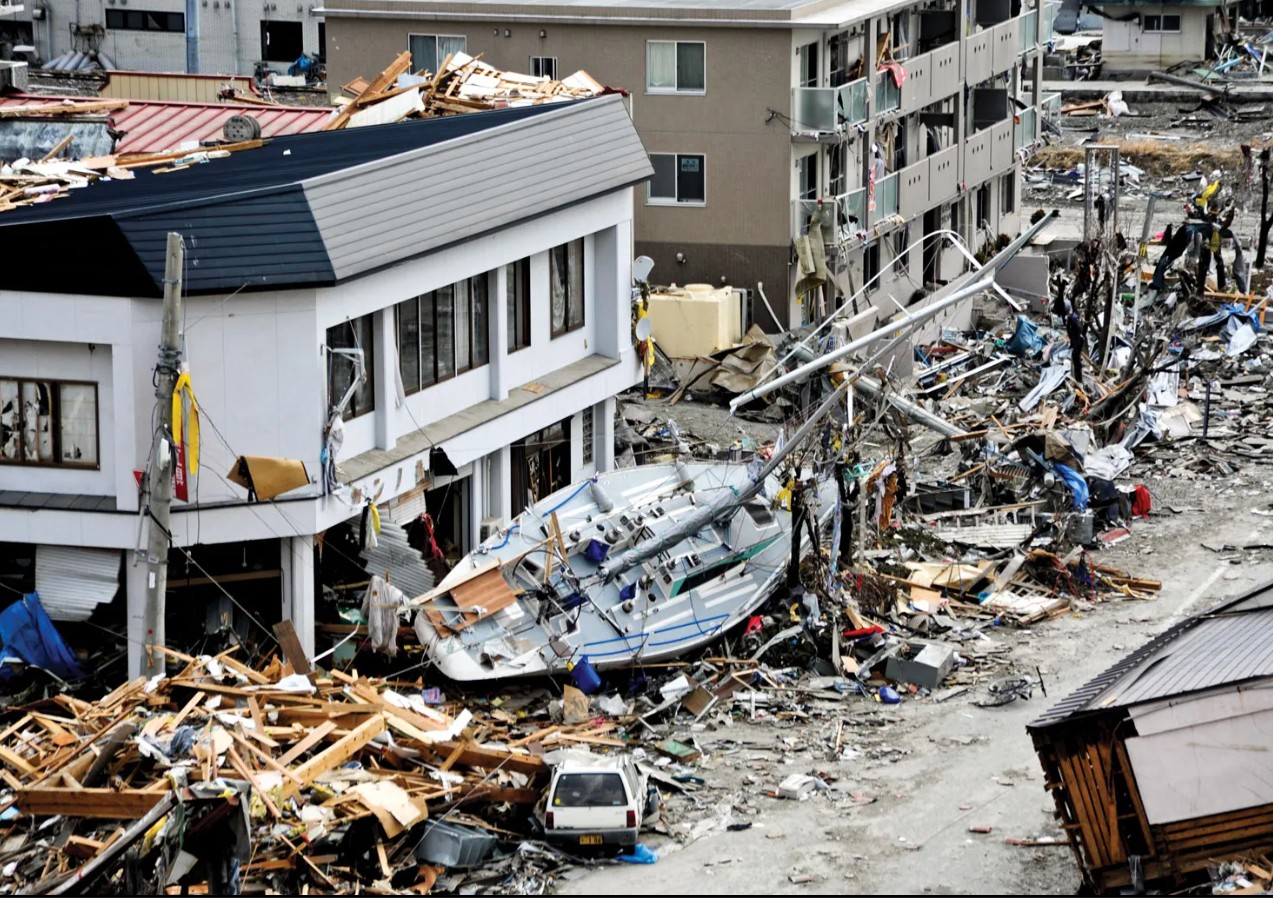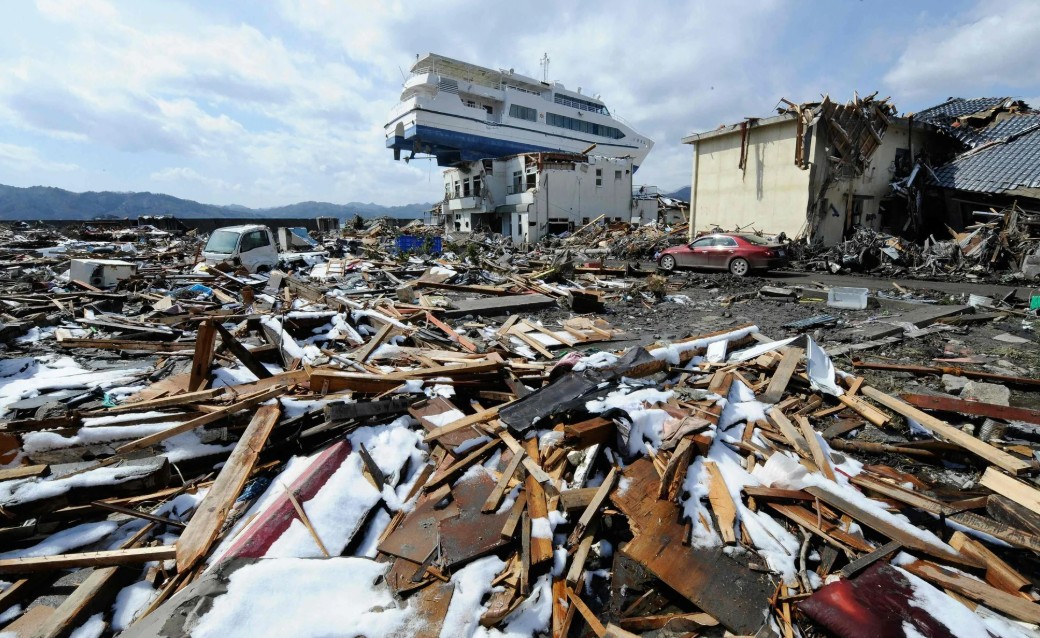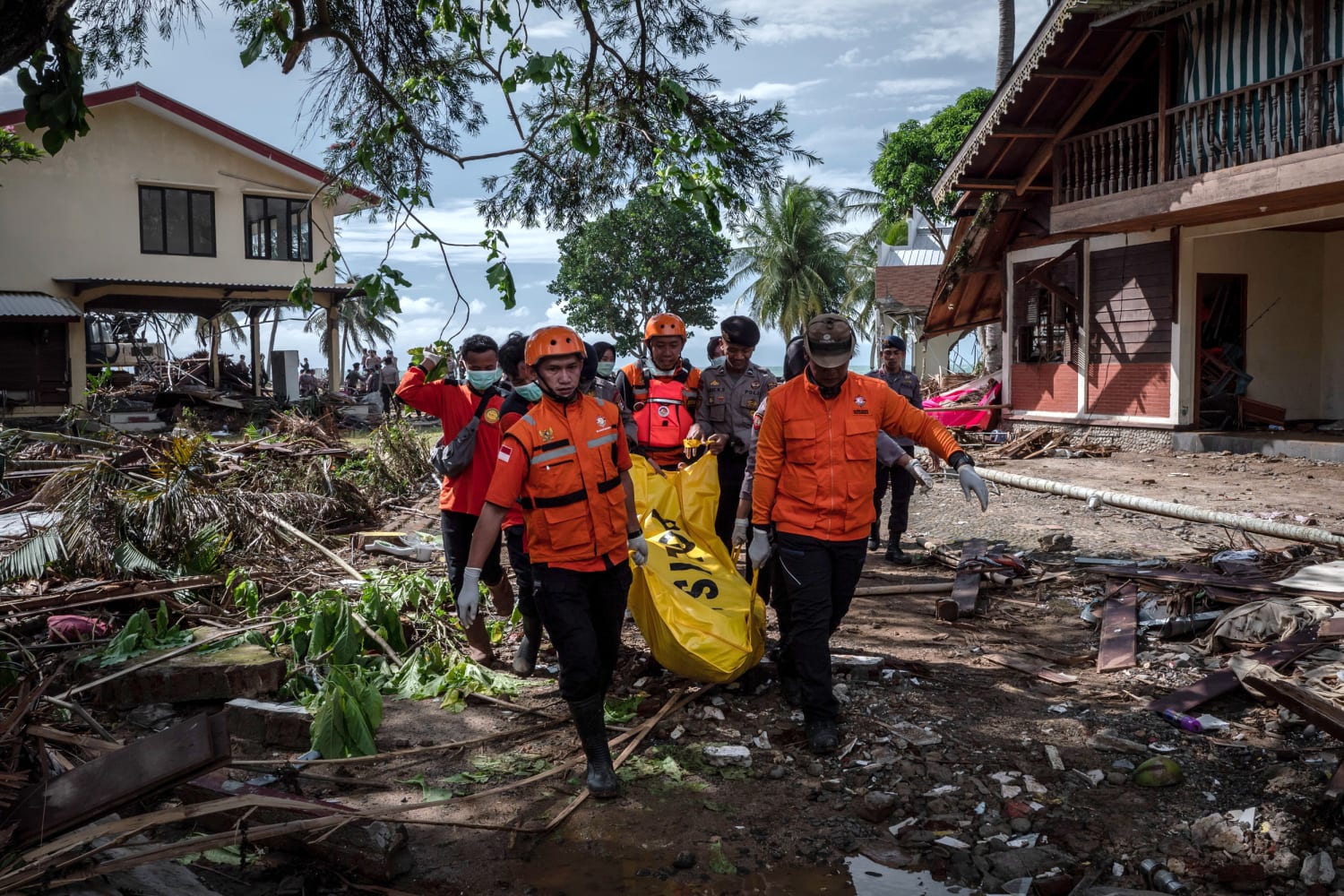TSUNAMI
A tsunami is a large ocean wave that rises high and poses a danger to coastal areas. It forms due to strong underwater earthquakes and landslides in the ocean.
More InformationA tsunami can reach great heights and occur within just a few minutes after a strong earthquake. The danger can last for several hours and can happen at any time, day or night.
More InformationKNOW THE DIFFERENCE
TSUNAMI WATCH - A tsunami is possible near your area, but it is not yet confirmed. Stay alert and listen for updates.
TSUNAMI WARNING - A tsunami has not been physically observed yet, but there is a high possibility that it may occur and reach the area within a few hours. Prepare and be ready for possible evacuation.
HOW DOES A TSUNAMI FORM?
Overriding Plate
A tectonic plate on the outer layer of the Earth's crust moves over an adjacent plate. The boundary between these plates is called a subduction zone. When the plates suddenly shift in this zone, they get compressed, causing an earthquake.
Slow Distortion
When a plate gets stuck in the subduction zone, a bulge may form behind it. This process can continue for decades or even centuries until enough force builds up to cause a major shift.
Spread of Tsunami Waves
The growing tsunami continues to travel outward. One part carries water inland, while the opposite direction moves toward the Pacific Ocean and other distant coastlines.
RELATED NEWS
PREPARING FOR A TSUNAMI
01 Discuss tsunami preparedness with the whole family.
Monitor advisories to know if evacuation is necessary.
02 Be aware of tsunami risks in your area.
Include food, water, a flashlight, a battery-powered radio, extra batteries, medicine, and important documents in your emergency kit.
03 Plan evacuation routes from home, work, school, or other places to a safer location.
Ensure you have a clear evacuation route and an alternative path in case evacuation is needed.
04 If possible, choose a location at least 100 meters above sea level or 2 miles away from the shore.
Select higher ground to avoid flooding and strong water currents.
05 Aim to reach high ground within 15 minutes.
Avoid bridges, canals, and other areas that may be hit by strong water currents.
06 Practice your evacuation plan and try to memorize routes, even at night.
Conduct regular tsunami drills so everyone knows what to do in an emergency.
07 Protect your pets and home.
Make sure you have a plan for pets and check if your home is safe before returning after a tsunami.
08 Ensure your home, pasture, and animal shelters are safe and protected.
Avoid returning home until authorities confirm it is safe.
09 Avoid entering homes or buildings within 100 feet of the shoreline.
Stay in high ground and wait for an official advisory before returning.
10 If you live near the coast, build your house on elevated ground to minimize damage.
Ensure your house has structural reinforcements to withstand a tsunami.
WHAT TO DO DURING A TSUNAMI
01 Duck, protect your head, and wait for the earthquake to stop.
If indoors, find a sturdy spot to protect yourself.
02 After the earthquake, immediately leave your home and follow the planned evacuation route.
A tsunami can arrive within minutes, so do not wait for an official warning before evacuating.
03 Listen to the radio or monitor official information.
Stay updated with advisories from authorities to follow proper evacuation guidelines.
04 Head straight to higher ground if you are in a coastal area.
Evacuate to a location at least 100 meters above sea level or 2 miles away from the shoreline.
05 If you hear a tsunami warning alarm, evacuate immediately.
Avoid going to the beach to prevent being caught by the tsunami's strong waves.
06 Bring emergency essentials.
Make sure to carry food, water, a battery-powered radio, a flashlight, and important documents.
07 If evacuating, take your pets with you.
Protect your pets and ensure they have enough food and water.
08 Do not return to the hazard zone until authorities declare it safe.
Wait for an official advisory before returning home to avoid potential danger.
09 Avoid power lines and stay away from fallen electric poles.
Be cautious of power cables that may still be live after the tsunami.
10 Stay in a safe place and wait for an official advisory before returning home.
Ensure your family and household are safe before going back.
WHAT TO DO AFTER A TSUNAMI
01 Avoid areas affected by the tsunami to prevent interfering with rescuers.
Be cautious of damaged structures, power lines, and fallen trees or poles.
02 Help those in need, especially children, the elderly, pregnant women, and people with disabilities.
Prioritize assisting those who need help the most.
03 Check on the condition of each family member and how they are coping with the situation.
Communicate with relatives and close friends to reduce stress and anxiety.
04 Avoid driving through flooded areas to prevent traffic congestion and disruption of rescue operations.
If travel is necessary, ensure that the route is safe and follow authorities' instructions.
05 Follow official advisories and inspect your house before re-entering. If the house has been checked, you may begin cleaning.
Clean your home using proper equipment and avoid inhaling potentially contaminated air.
06 Stay alert for falling debris. Check gas, water, and power lines before using them.
If you smell a gas leak, evacuate immediately and report it to the authorities.

